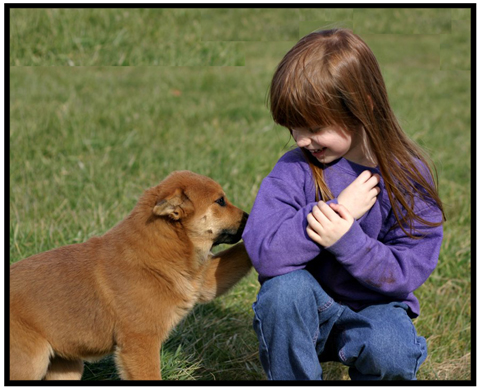Pets, Kids, and Food
Column #171 
Everyday, usually several times a day, people make food choices. Normally their initial focus is on themselves, after that it’s the needs of their family and pets. Naturally all major food suppliers seek to be the target of their focus. So what do marketing trends suggest? In other words what motivates people when they buy food?
I follow pet food market trends mostly out of curiosity. I like to see how the big boys strategize their marketing and nutritional programs. The keyword search “pet food trends 2018” brings up 138,000,000 hits. Some of the new age industrial pet food marketing strategies are a huge change from just five years ago. It’s being said that not only are older citizens responding, but many younger consumers are also changing their habits.
Interestingly, consumers are slowly but steadily going in two different directions at once. In analyzing the decision process, I want to ignore what people do regarding the foods they eat personally because we already know what they are. The vast majority eats traditional foods that cause chronic diseases. Only a tiny minority, probably around one percent, actually limits their food choices to grass-fed meats, Omega-3 meats, wild caught seafood, green leafy vegetables, other vegetables, and just a little fruit and nuts.
Mainly what I want to discuss are the foods people provide their children and pets. Just like food for humans, the big pet food companies watch market trends like hawks. They don’t care what people eat. They don’t care what people feed their children. They care only about what people are tending to think about when purchasing food for their pets.
The pet food industry has many conferences featuring professional presenters and there are thousands of articles published by pet industry magazines and blogs--all written by professional analysts. For the past five years the emphasis in those communicays regarding grain-free, omega-3, vegetables, meat, and even raw meat has gone up significantly. The articles and presentations not only emphasize that consumer preferences are changing, but pets are healthier because of the changes!
Ironically, I haven’t seen veterinarians show an increase in their desire to recommend the many rather new nutritional theories. But we all can see the new nutritional emphasis on grain-free pet foods in today’s mainstream mass marketing efforts. If we see it on television, that means there is a large and growing market. It means the tipping point has been reached in the awareness for what causes pet ailments. A Google search for “grass fed meat for dogs” comes up with an amazing 29,600,000 results. This search is for the ultimate in nutritional pet food that skips over all of the many hundreds of alternatives that lie between grain-based foods and raw grass-fed meat.
People are actually waking up to the fact that raw meat is the best and healthiest food for a dog and it’s the only proper food for a feline. Felines in zoos are only fed raw meat because anything else damages their health. Racing dogs and sled dogs, hard working dogs, are fed raw meat. This trend to avoid grain and high glycemic foods is growing for not only older consumers, but the younger ones as well. This is great news for pets!
But what are the same consumers (parents) doing when it comes to feeding their children? You guessed it. They haven’t yet connected the dots. Yes, the schools are trying to feed more vegetables of which most end up in the garbage. But it’s a rare parent that greatly restricts the following:
● high glycemic foods
● pastries
● cookies
● breads
● pasta
● grain-based foods
● grain-fed meats
● nuts
● foods fried in vegetable oils
● soft drinks
● processed snacks
● candy
Right, those parents seem virtually nonexistent. Unlike new age pet owners, nearly all parents remain ignorant and too lazy to put in the effort required to train their children to eat halfway proper foods. So no matter what the schools are trying to do, parents are universally appeasing their children with horrible foods that negatively impact their children’s mental and physical functions while setting the stage for chronic diseases. Childhood obesity is only the tip of the iceberg.
Yes, Americans are becoming more enlightened regarding their pets. They are more than willing to get their pets to change food preferences because they hope to avoid future veterinarian bills. But the treatment of their children leaves a lot to be desired.
To your health.
Ted Slanker
Ted Slanker has been reporting on the fundamentals of nutritional research in publications, television and radio appearances, and at conferences since 1999. He condenses complex studies into the basics required for health and well-being. His eBook, The Real Diet of Man, is available online.
Don’t miss these links for additional reading:
Examples of a Pet Food Market Trend Articles
Google Search for “Pet Food Trends 2018”
Google Search for “Grass Fed Meat for Dogs”
Pet Food Trends: Clean Label, Grains, Health Benefits, and More
How Societal Changes Will Impact Pets, Pet Ownership by Debbie Phillips-Donaldson
Childhood Obesity Facts from CDC




